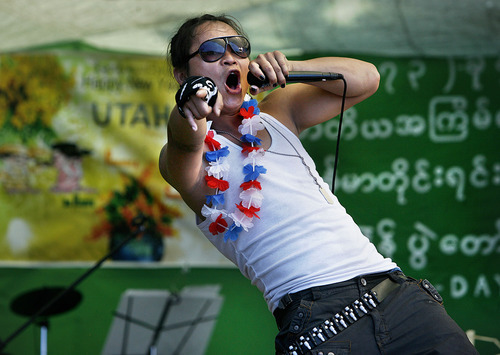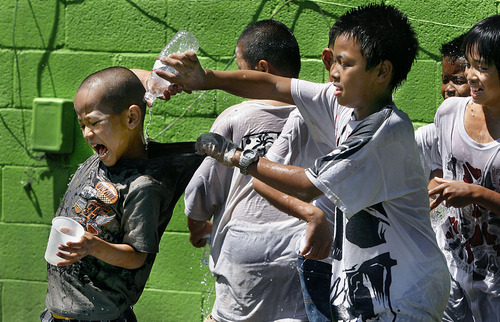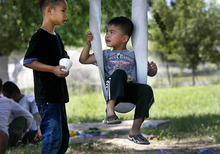This is an archived article that was published on sltrib.com in 2011, and information in the article may be outdated. It is provided only for personal research purposes and may not be reprinted.
The Fourth of July weekend may seem a bit late to celebrate the new year, but the timing is perfect for Utah's Myanmar refugee community.
The community celebrated its third annual Thingyan — or water — festival Sunday with food, dancing, prayers and water fights in a large lot near the state Fairpark.
In Myanmar — also known as Burma — the festival is usually celebrated in April, explains organizer Win Zaw, but Utah's spring weather is too cold for water fights. The group has waited until July to hold the festival, when soaring temperatures make hosing down one's neighbor a much friendlier gesture.
Water symbolizes renewal, explains community leader Han Win. Washing out the old year leaves the new one fresh, clean and clear like cold water. Traditionally celebrants fill large bowls with fresh springwater before dipping in fragrant yellow flowers, which they use to tap each other on the shoulder. As the day progresses, ceremony is forgotten and celebrants pelt each other with water balloons and streams from high-pressure hoses.
Thingyan is a national holiday in Myanmar, said Zaw, and is also celebrated in Thailand, Laos and Cambodia. Everyone has three or four days off work, and spends the time partying with friends and relatives.
"Buddhists, Christians, everybody comes out to play," Zaw said.
Participants spent the early part of the festival listening to a sermon by Buddhist monks, to whom they make donations and offerings, Win said. The elderly and poor also receive gifts and food in the belief kind acts will bring favor in the new year.
The celebration is important to Burmese refugees because it helps young children understand their culture, Win said. Nearly 1,000 refugees from the war-torn country's eight ethnic groups were resettled in Utah in 2009, according to statistics kept by the Utah Office of Refugee Services. That number has gone up in recent years as political turmoil continues, Win said. He estimates the community at around 2,000 members in Salt Lake County, including children born in the United States. The group is a small one, but very tight-knit, like a large extended family, he said.
The gathering has become larger and better each year, Win said, and organizers hope it can grow larger in the future. This year the community invited Fairpark neighbors to the celebration, and they hope to eventually invite the entire city to eat sweet rice balls and wash away the old year.
Twitter: @Katie_Drake









